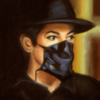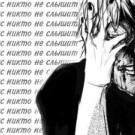-
Публикаций
510 -
Зарегистрирован
-
Посещение
Информация
-
Пол
Не определился
Посетители профиля
22 328 просмотров профиля
-
vsj SPURME 18.06.2023 везде где разменялся хитами 0 кб (АКБ) везде где разменялся хитами 0 кб
-
 Pichmawito отреагировал на сообщение в теме:
Ананасы
Pichmawito отреагировал на сообщение в теме:
Ананасы
-
согласен брат
-
Ну реально по факту не злись мужик, ну там чита нет
-
но чита на реке нет, просто чел слабый который рекал
-
Я его не знаю ваще кто єто такео
-
 Heploxo отреагировал на сообщение в теме:
буст LaffiPlay (_kisqless)
Heploxo отреагировал на сообщение в теме:
буст LaffiPlay (_kisqless)
-
DeaDSaKuRa подписался на Pichmawito
-
1. CekcuGod 2. Pichmawito (StarsWillFall) 3. 05.03.2023 4. The Declaration of Independence, 1776 By issuing the Declaration of Independence, adopted by the Continental Congress on July 4, 1776, the 13 American colonies severed their political connections to Great Britain. The Declaration summarized the colonists’ motivations for seeking independence. By declaring themselves an independent nation, the American colonists were able to confirm an official alliance with the Government of France and obtain French assistance in the war against Great Britain. The Declaration of Independence Throughout the 1760s and early 1770s, the North American colonists found themselves increasingly at odds with British imperial policies regarding taxation and frontier policy. When repeated protests failed to influence British policies, and instead resulted in the closing of the port of Boston and the declaration of martial law in Massachusetts, the colonial governments sent delegates to a Continental Congress to coordinate a colonial boycott of British goods. When fighting broke out between American colonists and British forces in Massachusetts, the Continental Congress worked with local groups, originally intended to enforce the boycott, to coordinate resistance against the British. British officials throughout the colonies increasingly found their authority challenged by informal local governments, although loyalist sentiment remained strong in some areas. Despite these changes, colonial leaders hoped to reconcile with the British Government, and all but the most radical members of Congress were unwilling to declare independence. However, in late 1775, Benjamin Franklin, then a member of the Secret Committee of Correspondence, hinted to French agents and other European sympathizers that the colonies were increasingly leaning towards seeking independence. While perhaps true, Franklin also hoped to convince the French to supply the colonists with aid. Independence would be necessary, however, before French officials would consider the possibility of an alliance. Throughout the winter of 1775–1776, the members of the Continental Congress came to view reconciliation with Britain as unlikely, and independence the only course of action available to them. When on December 22, 1775, the British Parliament prohibited trade with the colonies, Congress responded in April of 1776 by opening colonial ports—this was a major step towards severing ties with Britain. The colonists were aided by the January publication of Thomas Paine’s pamphlet Common Sense, which advocated the colonies’ independence and was widely distributed throughout the colonies. By February of 1776, colonial leaders were discussing the possibility of forming foreign alliances and began to draft the Model Treaty that would serve as a basis for the 1778 alliance with France. Leaders for the cause of independence wanted to make certain that they had sufficient congressional support before they would bring the issue to the vote. On June 7, 1776, Richard Henry Lee introduced a motion in Congress to declare independence. Other members of Congress were amenable but thought some colonies not quite ready. However, Congress did form a committee to draft a declaration of independence and assigned this duty to Thomas Jefferson. Thomas Paine Benjamin Franklin and John Adams reviewed Jefferson’s draft. They preserved its original form, but struck passages likely to meet with controversy or skepticism, most notably passages blaming King George III for the transatlantic slave trade and those blaming the British people rather than their government. The committee presented the final draft before Congress on June 28, 1776, and Congress adopted the final text of the Declaration of Independence on July 4. The British Government did its best to dismiss the Declaration as a trivial document issued by disgruntled colonists. British officials commissioned propagandists to highlight the declaration’s flaws and to rebut the colonists’ complaints. The Declaration divided British domestic opposition, as some American sympathizers thought the Declaration had gone too far, but in British-ruled Ireland it had many supporters. The Declaration’s most important diplomatic effect was to allow for recognition of the United States by friendly foreign governments. The Sultan of Morocco mentioned American ships in a consular document in 1777, but Congress had to wait until the 1778 Treaty of Alliance with France for a formal recognition of U.S. independence. The Netherlands acknowledged U.S. independence in 1782. Although Spain joined the war against Great Britain in 1779, it did not recognize U.S. independence until the 1783 Treaty of Paris. Under the terms of the treaty, which ended the War of the American Revolution, Great Britain officially acknowledged the United States as a sovereign and independent nation. Independence Day (colloquially the Fourth of July) is a federal holiday in the United States commemorating the Declaration of Independence, which was ratified by the Second Continental Congress on July 4, 1776, establishing the United States of America. The Founding Father delegates of the Second Continental Congress declared that the Thirteen Colonies were no longer subject (and subordinate) to the monarch of Britain, King George III, and were now united, free, and independent states.[1] The Congress voted to approve independence by passing the Lee Resolution on July 2 and adopted the Declaration of Independence two days later, on July 4.[1] Independence Day is commonly associated with fireworks, parades, barbecues, carnivals, fairs, picnics, concerts,[2] baseball games, family reunions, political speeches, and ceremonies, in addition to various other public and private events celebrating the history, government, and traditions of the United States. Independence Day is the national day of the United States.[3][4][5] Background During the American Revolution, the legal separation of the thirteen colonies from Great Britain in 1776 actually occurred on July 2, when the Second Continental Congress voted to approve a resolution of independence that had been proposed in June by Richard Henry Lee of Virginia declaring the United States independent from Great Britain's rule.[6][7] After voting for independence, Congress turned its attention to the Declaration of Independence, a statement explaining this decision, which had been prepared by a Committee of Five, with Thomas Jefferson as its principal author. Congress debated and revised the wording of the Declaration to remove its vigorous denunciation of the slave trade, finally approving it two days later on July 4. A day earlier, John Adams had written to his wife Abigail: The second day of July 1776, will be the most memorable epoch in the history of America. I am apt to believe that it will be celebrated by succeeding generations as the great anniversary festival. It ought to be commemorated as the day of deliverance, by solemn acts of devotion to God Almighty. It ought to be solemnized with pomp and parade, with shows, games, sports, guns, bells, bonfires, and illuminations, from one end of this continent to the other, from this time forward forever more.[8] Adams's prediction was off by two days. From the outset, Americans celebrated independence on July 4, the date shown on the much-publicized Declaration of Independence, rather than on July 2, the date the resolution of independence was approved in a closed session of Congress.[9] Historians have long disputed whether members of Congress signed the Declaration of Independence on July 4, even though Thomas Jefferson, John Adams, and Benjamin Franklin all later wrote that they had signed it on that day. Most historians have concluded that the Declaration was signed nearly a month after its adoption, on August 2, 1776, and not on July 4 as is commonly believed.[10][11][12][13][14] By a remarkable coincidence, Thomas Jefferson and John Adams, the only two signatories of the Declaration of Independence later to serve as presidents of the United States, both died on the same day: July 4, 1826, which was the 50th anniversary of the Declaration, Jefferson even mentioning the fact.[15] Although not a signatory of the Declaration of Independence, James Monroe, another Founding Father who was elected president, also died on July 4, 1831, making him the third President who died on the anniversary of independence.[16] The only U.S. president to have been born on Independence Day was Calvin Coolidge, who was born on July 4, 1872.[17] Observance Independence Day issue of The Saturday Evening Post, 1924 In 1777, thirteen gunshots were fired in salute, once at morning and once again as evening fell, on July 4 in Bristol, Rhode Island. An article in the July 18, 1777 issue of The Virginia Gazette noted a celebration in Philadelphia in a manner a modern American would find familiar: an official dinner for the Continental Congress, toasts, 13-gun salutes, speeches, prayers, music, parades, troop reviews, and fireworks. Ships in port were decked with red, white, and blue bunting.[18] In 1778, from his headquarters at Ross Hall, near New Brunswick, New Jersey, General George Washington marked July 4 with a double ration of rum for his soldiers and an artillery salute (feu de joie). Across the Atlantic Ocean, ambassadors John Adams and Benjamin Franklin held a dinner for their fellow Americans in Paris, France.[19] American children of many ethnic backgrounds celebrate noisily in a fantasy 1902 Puck cartoon In 1779, July 4 fell on a Sunday. The holiday was celebrated on Monday, July 5.[19] In 1781, the Massachusetts General Court became the first state legislature to recognize July 4 as a state celebration.[19][20] In 1783, Salem, North Carolina, held a celebration with a challenging music program assembled by Johann Friedrich Peter entitled The Psalm of Joy. The town claims it to be the first public July 4 event, as it was carefully documented by the Moravian Church, and there are no government records of any earlier celebrations.[21] In 1870, the U.S. Congress made Independence Day an unpaid holiday for federal employees.[22] In 1938, Congress changed Independence Day to a paid federal holiday.[23] Customs An 1825 invitation to an Independence Day celebration Independence Day is a national holiday marked by patriotic displays. Per 5 U.S.C. § 6103, Independence Day is a federal holiday, so all non-essential federal institutions (such as the postal service and federal courts) are closed on that day. While the legal holiday remains on July 4, if that date happens to be on a Saturday or Sunday, then federal government employees will instead take the day off on the adjacent Friday or Monday, respectively.[24] Families often celebrate Independence Day by hosting or attending a picnic or barbecue;[25] many take advantage of the day off and, in some years, a long weekend to gather with relatives or friends. Decorations (e.g., streamers, balloons, and clothing) are generally colored red, white, and blue, the colors of the American flag. Parades are often held in the morning, before family get-togethers, while fireworks displays occur in the evening after dark at such places as parks, sporting venues, fairgrounds, public shorelines, or town squares.[citation needed] The night before the Fourth was once the focal point of celebrations, marked by raucous gatherings often incorporating bonfires as their centerpiece. In New England, towns competed to build towering pyramids, assembled from barrels and casks. They were lit at nightfall to usher in the celebration. The highest were in Salem, Massachusetts, with pyramids composed of as many as forty tiers of barrels. These made the tallest bonfires ever recorded. The custom flourished in the 19th and 20th centuries and is still practiced in some New England towns.[26] Independence Day fireworks are often accompanied by patriotic songs,[27] such as "The Star-Spangled Banner" (the American national anthem); "Columbia, the Gem of the Ocean"; "God Bless America"; "America the Beautiful"; "My Country, 'Tis of Thee"; "This Land Is Your Land"; "Stars and Stripes Forever"; "Yankee Doodle"; "Dixie" in southern states; "Lift Every Voice and Sing"; and occasionally, but has nominally fallen out of favor, Hail Columbia. Some of the lyrics recall images of the Revolutionary War or the War of 1812.[citation needed] Independence Day Parade in Washington, D.C. Firework shows are held in many states,[28] and many fireworks are sold for personal use or as an alternative to a public show. Safety concerns have led some states to ban fireworks or limit the sizes and types allowed. In addition, local and regional conditions may dictate whether the sale or use of fireworks in an area will be allowed; for example, the global supply chain crisis following the COVID-19 pandemic forced cancellations of shows.[29] Some local or regional firework sales are limited or prohibited because of dry weather or other specific concerns.[30] On these occasions the public may be prohibited from purchasing or discharging fireworks, but professional displays (such as those at sports events) may still take place.[citation needed] A salute of one gun for each state in the United States, called a "salute to the union," is fired on Independence Day at noon by any capable military base.[31] New York City has the largest fireworks display in the country sponsored by Macy's, with more than 22 tons of pyrotechnics exploded in 2009.[32] It generally holds displays in the East River. Other major displays are in Seattle on Lake Union; in San Diego over Mission Bay; in Boston on the Charles River; in Philadelphia over the Philadelphia Museum of Art; in San Francisco over the San Francisco Bay; and on the National Mall in Washington, D.C.[33] During the annual Windsor–Detroit International Freedom Festival, Detroit, Michigan hosts one of the largest fireworks displays in North America, over the Detroit River, to celebrate Independence Day in conjunction with Windsor, Ontario's celebration of Canada Day.[34] The first week of July is typically one of the busiest United States travel periods of the year, as many people use what is often a three-day holiday weekend for extended vacation trips.[35]
-
 Aesthesis отреагировал на сообщение в теме:
буст LaffiPlay (_kisqless)
Aesthesis отреагировал на сообщение в теме:
буст LaffiPlay (_kisqless)
-
Nikitosplay___yt подписался на Pichmawito
-
down
-
 Pichmawito отреагировал на сообщение в теме:
silly манипул
Pichmawito отреагировал на сообщение в теме:
silly манипул
-
 Pichmawito отреагировал на сообщение в теме:
silly манипул
Pichmawito отреагировал на сообщение в теме:
silly манипул
-
 doTopiez отреагировал на сообщение в теме:
тпаемся:)))
doTopiez отреагировал на сообщение в теме:
тпаемся:)))
-
 DeaDSaKuRa отреагировал на сообщение в теме:
💙Научись принимать моё нет💙
DeaDSaKuRa отреагировал на сообщение в теме:
💙Научись принимать моё нет💙
-
 Pichmawito отреагировал на сообщение в теме:
silly манипул
Pichmawito отреагировал на сообщение в теме:
silly манипул
-
Манипул есть
-
Лучшая просто Удачи!
-
 Pichmawito отреагировал на сообщение в теме:
тпаемся:)))
Pichmawito отреагировал на сообщение в теме:
тпаемся:)))
-
 Pichmawito отреагировал на сообщение в теме:
тпаемся:)))
Pichmawito отреагировал на сообщение в теме:
тпаемся:)))
-
 gnd отреагировал на сообщение в теме:
тпаемся:)))
gnd отреагировал на сообщение в теме:
тпаемся:)))
-
 gnd отреагировал на сообщение в теме:
тпаемся:)))
gnd отреагировал на сообщение в теме:
тпаемся:)))
-
 gnd отреагировал на сообщение в теме:
тпаемся:)))
gnd отреагировал на сообщение в теме:
тпаемся:)))
-
Скинул, ну вообщем, посмотрим на решение модератора
-
Ты на видео убил человека благодаря телепорту с помощью плохого интернета




.thumb.jpg.6498ff5a072f96d33fd3a8d538ee4717.jpg)





.thumb.png.146ab1326a7db15d586af65d914e71cb.png)